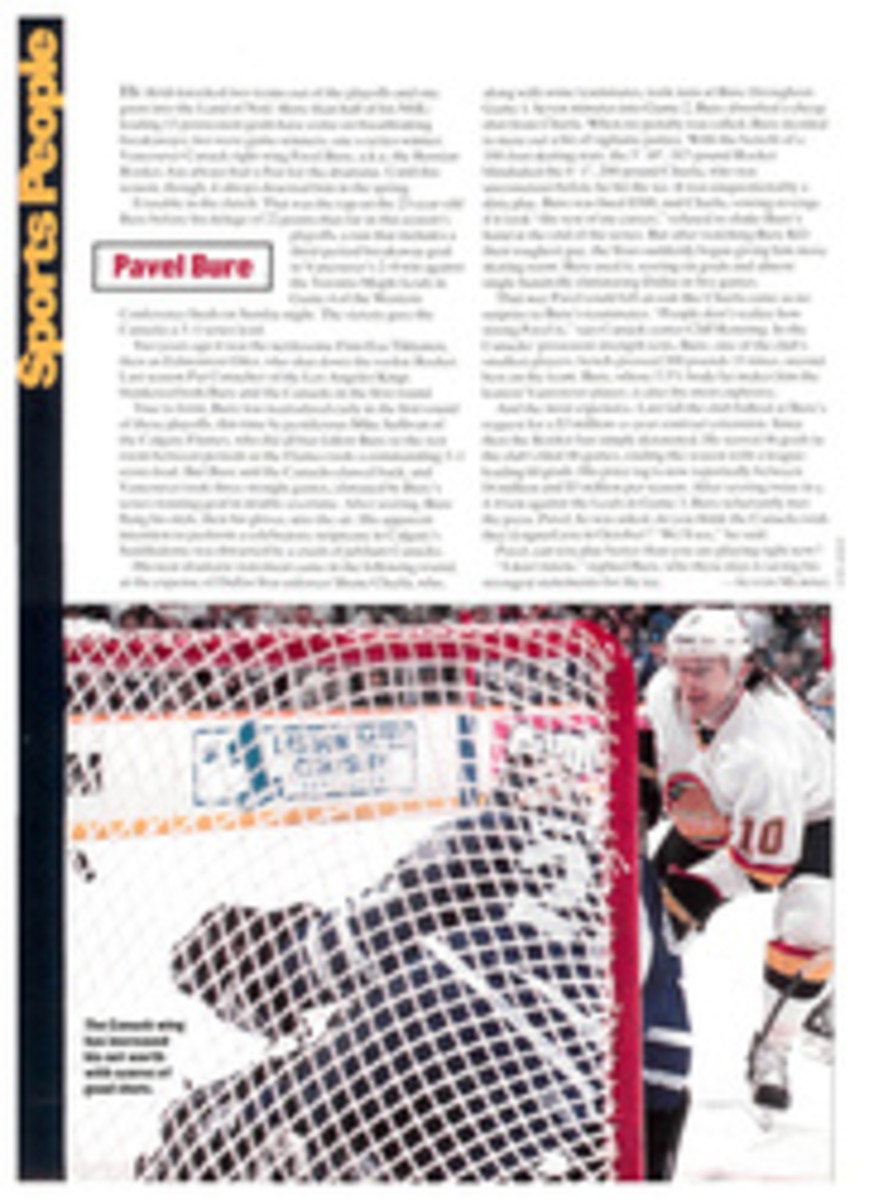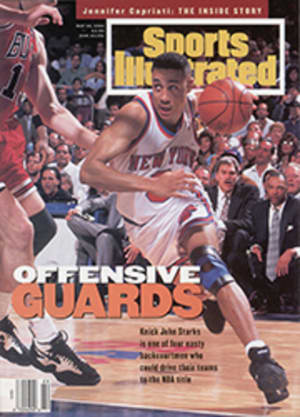
Collectors' Catch
To Ben Chosa the aesthetics of fish decoys are simple: Either the wooden lures attract fish to his spear or they don't. "It swam well enough to kill me a lot of muskies," Chosa says of one graceful perch he carved a half century ago.
But that was back when a spearfisher's decoy had only to catch the eye of a hungry game fish. Now the lures are attracting the attention of folk-art collectors, who are gobbling up these often fanciful creations with a voracity few muskies can match. These days, decoy design is a complicated issue because a decoy is no longer an artifact, it's art.
"I always tell people that if they want a perfect replica of a perch or a walleye or a bass, go to an artist, don't come to me," says Chosa, 65, an Ojibwe from the Lac du Flambeau reservation in northeastern Wisconsin. "I make Ojibwe working decoys. They are designed to decoy a muskie up within range of a handheld spear so you can take that muskie to feed your family. That it's artistically pleasing to somebody is incidental."
Incidental or not, the decoys' artistic appeal has pushed the price of good handmade lures beyond the reach of most fishermen. Chosa sells his decoys for $200 apiece. In 1990 Sotheby's auctioned a decoy by Oscar Peterson, Michigan's dean of wood carving during the early and mid-1900s, for $18,700. "You don't have to be a fisherman to appreciate them," says Minnesota collector Jim Richards.
Indeed you don't. Fish decoys—"fish" to carvers and collectors—have an amazing allure. Some are as small as minnows, others as large as sturgeon. Some are somber, others a riot of color. Some are realistic; others swim straight out of Lewis Carroll's Jabberwocky.
In this country these creatures trace their origin to Great Lakes Indians, who used small wooden decoys to lure fish within spearing distance three centuries ago, much as Chosa does today. Imitating the Indians, settlers made decoys to spear muskies, pike and other fish, and something of a cottage industry took root. During the Depression, Hans Janner Sr. of Mount Clemens, Mich., carved streamlined yet muscular fish with broad, graceful tails. Today they are perhaps the most valuable of all decoys. Peterson, a woodcarver from Cadillac, Mich., turned out thousands of decoys, many with an art-deco flair.
Like many fish fans, Art Kimball is a lifelong collector of all kinds of folk art and antiques, including duck decoys. In the 1970s Kimball, who lives in Boulder Junction, Wis., discovered fish. He found bargains in antique shops and bought decoys from "pickers," who would comb back-road stores and auctions.
Kimball wasn't alone. Fish fever spread among collectors, culminating in an exhibit, organized by the Museum of American Folk Art in New York City, of more than 200 decoys. From 1990 to '92 the collection traveled to cities throughout the U.S. and to British Columbia.
As interest in fish grows, prices continue to rise. Nonetheless, collectible-grade decoys are available for $100 to $500, and run-of-the-mill fish sell for $50 to $100. "There's still time for people to get into it," Kimball says.
Unfortunately, the fish boom has its downside. Most worrisome to collectors is a proliferation of fakes passed off as the work of old masters. "There are a million fake Petersons," Richards says, and he advises fledgling collectors to study the market carefully.
Another dismaying trend is the growing number of fish that are made specifically for the art market. Many modern carvers eschew the simple lines and impressionistic paint jobs of old-time decoys in favor of the hyperrealism prevalent in modern wildlife art. Burt Hyatt, a carver living in northern Minnesota, painstakingly cuts up to 600 scale marks into each of his decoys. Selling for roughly $40 each, few of Hyatt's decoys take the plunge.
Are such self-conscious imitations really folk art? Kimball, for one, thinks not. "When they all get realistic, they start looking alike," he says. "It takes away from the provincial quality of the fish."
Richards, too, prefers his fish "honest," whittled in the long, lonely hours of a northern winter. If the maker carved a lip with a whimsical curl or lavished the piece with colorful paint, it's fine with Richards.
"These are folk art," he says as he shows visitors the dozens of decoys on display in the lodge of his cross-country ski resort. "They weren't made for the market."
FOUR PHOTOS
LAYNE KENNEDY
Greg Breining is a freelance writer who lives in Columbia Heights, Minn.

